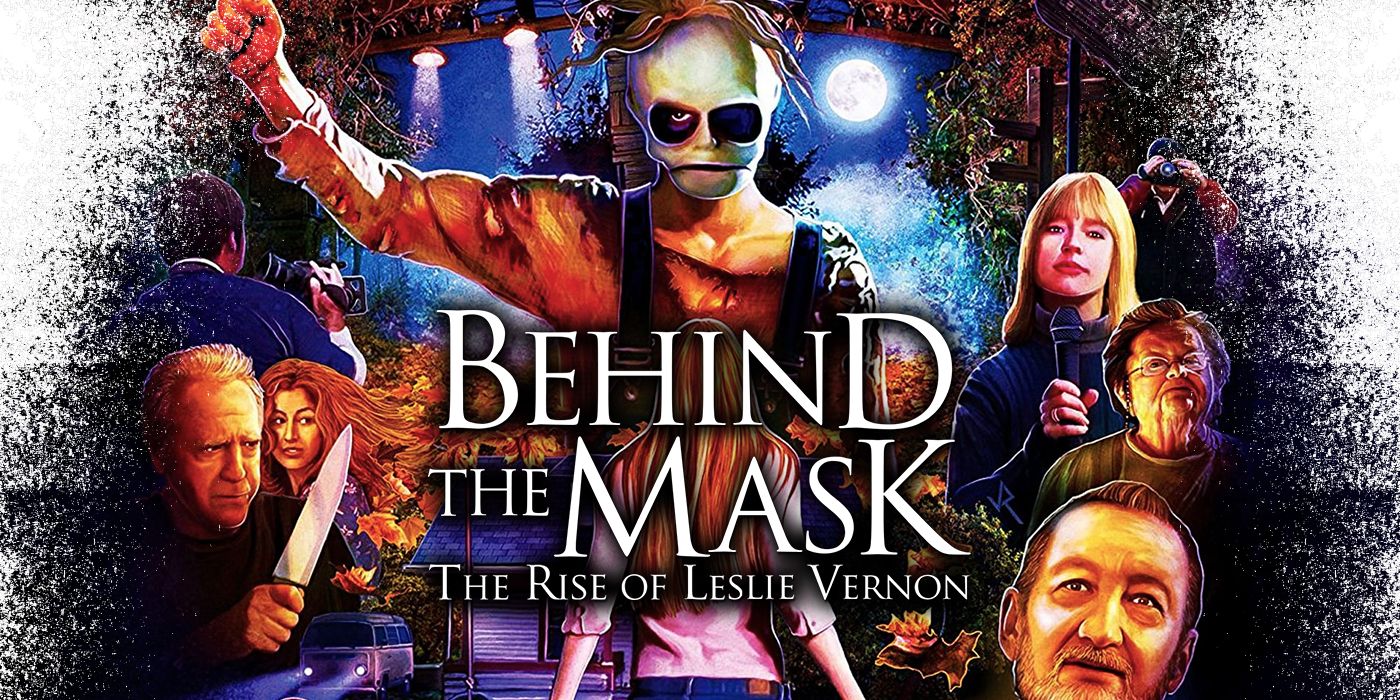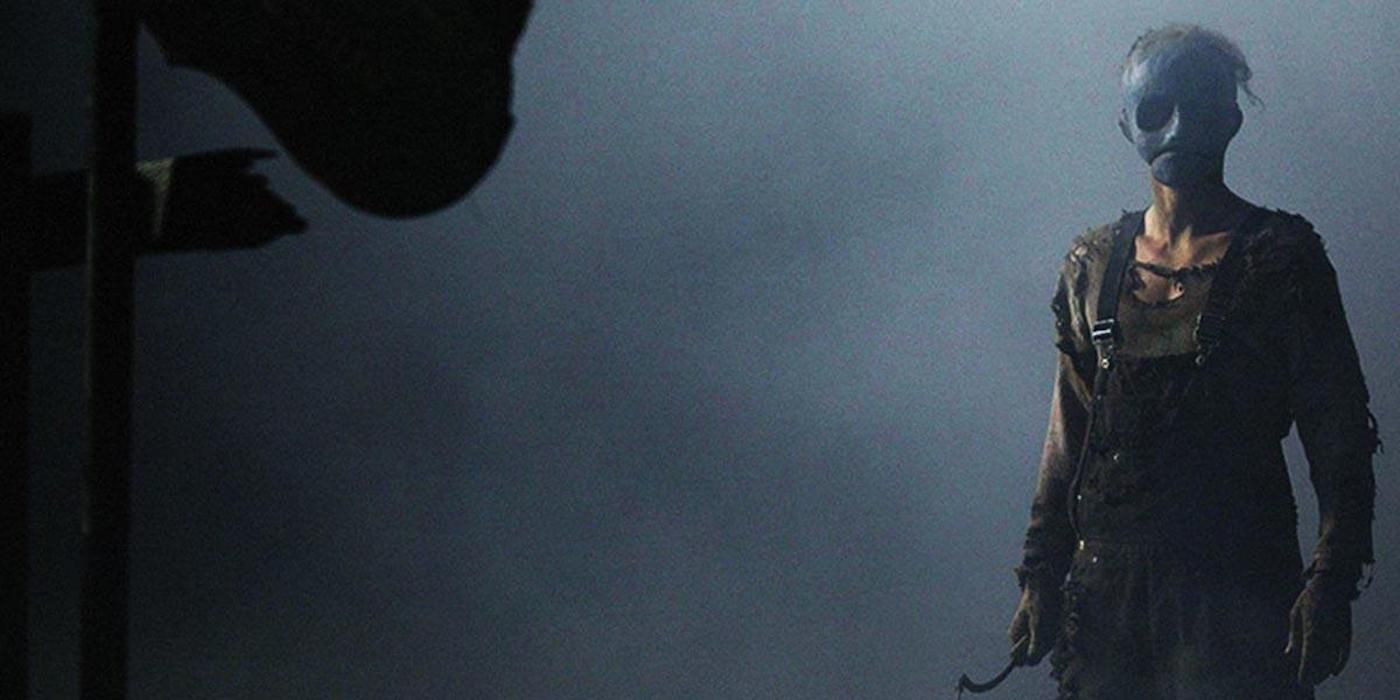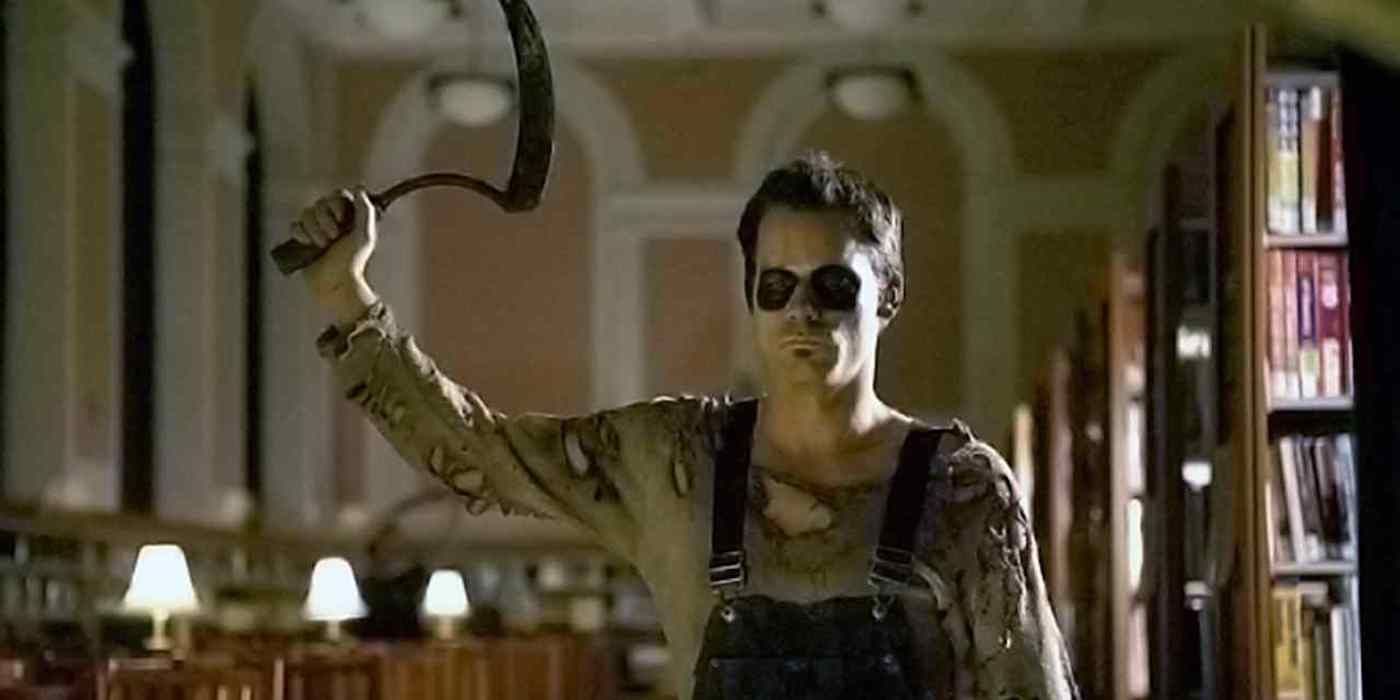The meta-narrative is a long-standing subgenre in cinema that’s about as tired as your parent’s posting an old meme on Facebook. From serial killer crossovers to the Scream franchise constantly reminding us of the "rules" of how to survive a horror movie, films that love to poke fun at the idea that they’re a horror movie are more prevalent than ever before. And while recent entries in the subgenre like Censored and Scream 5 have made for some fun and introspective looks at the slasher formula, none of them have been able to top the focused and hysterical approach made by 2006’s Behind the Mask: The Rise of Leslie Vernon.
The mockumentary directed by Scott Glosserman follows the titular wannabe serial killer (Nathan Baesel) whose big dream is to be in the same league as Jason Voorhees or Freddy Krueger, killers who, in the film’s world, are presented as real-life historical figures. When a journalist named Taylor Gentry (Angela Goethals) and her documentary crew arrive to make a film about Leslie’s journey, they’re thrown into a dangerous clash between ethics and preservation as they quickly realize how serious Leslie is in becoming America’s Next Top Killer. Behind the Mask is one of the best horror comedies of the modern-day because of its unique approach towards how it plays with the genre.
Throughout the events of the film, Leslie lets Taylor and her crew in on the various tropes that exist within the world of horror films, which are re-contextualized into a set of principles that he must abide by as a killer. The film deconstructs these ideas in interesting ways, from Leslie’s cardio routine so he can capture his prey with Michael Myers-esque velocity, to his hilarious categorizing of various characters and tropes as “industry terms.” Behind the Mask looks at slashing as sort of a professional business, framing Leslie as an aspiring, disciplined worker who strives to literally kill his way to success. Another great example of Leslie’s infatuation with following these rules comes in the form of Robert Englund’s character, Doc Halloran (just one of the film’s many easter eggs to past horror classics). Halloran turns out to be Leslie’s “Ahab,” a central figure that exists to destroy him with the help of Leslie’s self-appointed “survival girl” Katie (Kate Lang Johnson).
The characters are elements that Leslie considers to be integral towards his success; like a rite of passage that, in his eyes, gives him legitimacy as a future legend. Add all that with Leslie’s fictional backstory and ties to Katie (in a hilarious scene where he reveals that all the stories of slasher victims being related to them are all just CGI mock-ups in fake newspaper clippings), and it shows that Leslie’s planning is meticulous because it’s grounded in a formula that is known to work well. If Myers and Krueger had all of these, then in Leslie’s perspective that means it’s crucial for him to emulate those aspects, making for the perfect set-up to a meta-killer that rivals the likes of Billy Loomis from Scream.
Yet the biggest difference between a character like Leslie Vernon and Billy Loomis is their reasons for leaning towards the horror gods, and how the film’s tone treats it. Wherein Billy’s reasoning for killing is tied to him getting revenge for his upbringing (with everyone in Woodsboro appropriately taking him seriously), Leslie believes that he needs to kill to maintain a balance between good and evil; as if killing was his destiny to not only cement his slasher status but to also bring out the best in humanity through his “survival girl” (later revealed to actually be Taylor, who is a virgin unlike Katie). It’s a disturbing philosophy to the final girl concept that’s surprisingly taken with a grain of salt from the film’s characters.
While Taylor and her crew are obviously caught in a hard place by documenting Leslie, she sees his reasons for sticking to the rules as silly. She doesn’t understand why he thinks he needs to die, the same way she doesn’t understand why he won’t kill anybody who hides inside a closet (“It’s a sacred place”). Another example of this has to deal with Taylor’s weapon of choice when she kills Leslie. Earlier in the film, the two have a funny discussion where Leslie is convinced that the weapon his “survivor girl” needs has to be phallic, to re-emphasize the conventions of the powerful final figure.
Taylor doubts it despite his evidence but is ultimately proven wrong when she uses that kind of weapon in the form of an apple press, adding more credence to Leslie’s odd beliefs. The film rides a fine line between treating Leslie’s arc like a parody and establishing a fascinating perspective to the horror formula in a way that few satires have been able to do effectively.
Behind the Mask still remains a perfect example of what you can say about horror films in a new and exciting way. It’s still strange that the film never got an official sequel given the ideas it played with, but the original makes for an entertaining and absorbing piece of meta-horror that’s still unlike anything we’ve seen since. It’s a love letter to horror for the fan who wants a little more subtext in their slashers.



